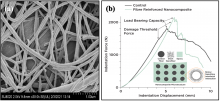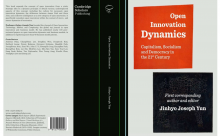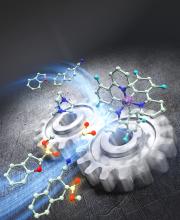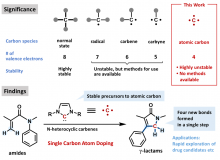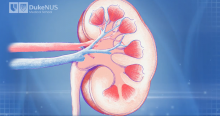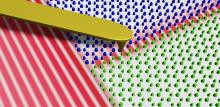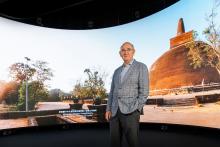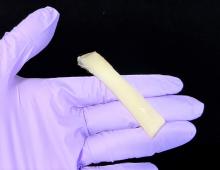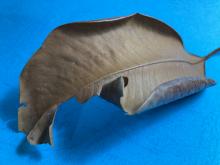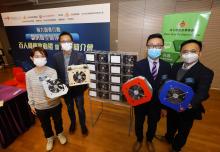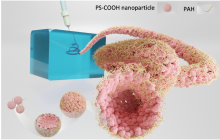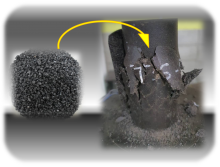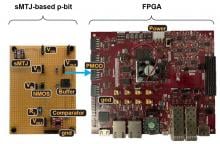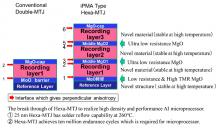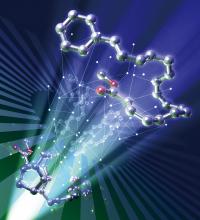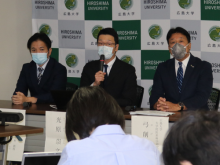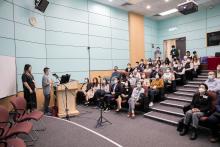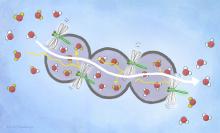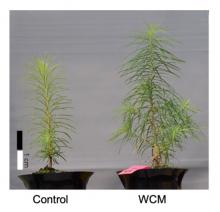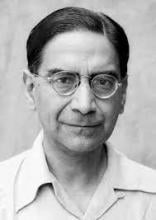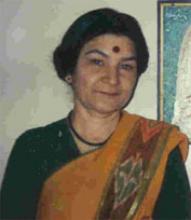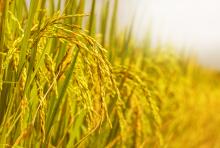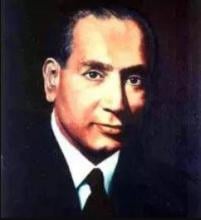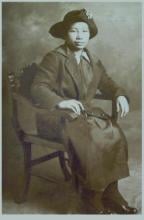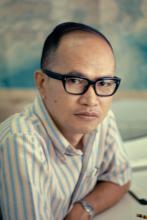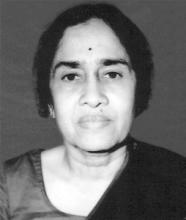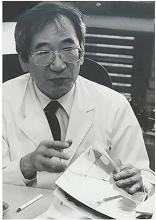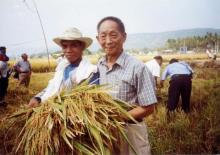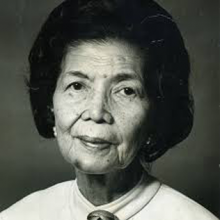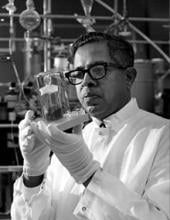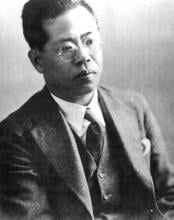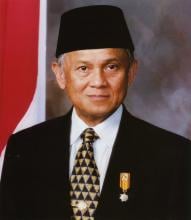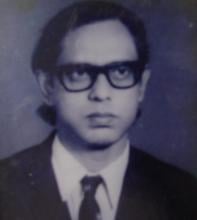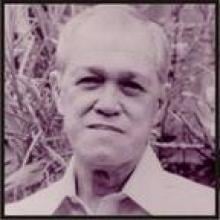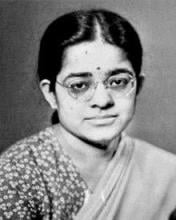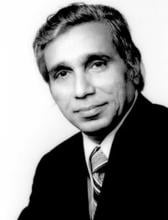Innovation
News
28 Feb 2023
A team of researchers from Universiti Teknologi Malaysia and Universiti Malaysia Pahang has successfully developed an electrospinning method for producing Nylon Nanofibres for use in carbon fibre composites to enhance the impact properties of carbon composites.
23 Feb 2023
Scientists from Oil Crops Research Institute (OCRI) of Chinese Academy of Agricultural Sciences (CAAS), Anhui Agricultural University (Anhui, China), Newcastle University in Singapore, and Huizhou Comvikin Biotechnology Co., Ltd (Guangdong, China) have developed a green and efficient approach to synthesize highly liposoluble and antioxidant L-ascorbyl esters by immobilized lipases.
17 Feb 2023
Tree rings forecast extreme weather in central Asia, Squid 🦑and chemistry make versatile hydrogels, James Webb telescope reveals the earliest galaxies & Reducing negative effects of screen time. Read all in the latest Editor's Choice. Plus our latest journalist resource "Experts for Media: Antimicrobial Resistance "🦠.
14 Feb 2023
- Dr. Yun established open innovation theory (dynamics, business model, political economics) as the first corresponding author, collaborating with global scholars
08 Feb 2023
Hokkaido University researchers have developed a novel method to design and develop peptide antibiotics in large numbers, which will prove critical to controlling antibiotic resistance.
07 Feb 2023
Two catalysts working in tandem enable inexpensive formate salts to perform difficult dearomative reactions, giving products potentially useful for drug development.
05 Feb 2023
Scientists from two Asian universities, namely Universiti Teknologi Malaysia (UTM) and Newcastle University in Singapore, have completed a study to understand how the mechanical behaviour of carbon fibre reinforced epoxy composite laminates could be compromised by moisture seepage.
02 Feb 2023
Researchers from Osaka University have used single carbon atom doping to form four chemical bonds in one step. Gamma-lactams (cyclic molecules that are common in antibiotics) were easily synthetically accessible from alpha, beta-unsaturated amides (an important molecule in cancer progression). The team chemically modified an anti-seizure medication in 96% yield, highlighting the work's utility to otherwise synthetically complex aspects of pharmaceutical development. The results of this work could become foundational to drug discovery and development.
02 Feb 2023
Blocking an immune-regulating protein reverses the damage caused by acute and chronic kidney disease, a preclinical study suggests.
30 Jan 2023
Everyday electronics, such as our phones, employ surface acoustic wave devices for frequency filtering and sensing. But this consumes a lot of energy, serving as a drain on battery life. Now, a team of researchers has developed a new acoustic waveguide based on the mathematical concept of topology, which will help alleviate this problem.
20 Jan 2023
Hong Kong Baptist University (HKBU) took an important step forward in heralding a new cinematic experience for the future by establishing the Visualisation Research Centre recently. The Centre is home to the world’s first 360-degree immersive LED Visualisation Cinema and the 180-degree iDome Cinema.
20 Jan 2023
The natural abilities of squid tissues and the creativity of chemists combine to take hydrogel research in new directions.
09 Jan 2023
Scientists from five Asian universities, namely Vellore Institute of Technology (VIT), Universiti Putra Malaysia (UPM), Charles Darwin University, National Defence University of Malaysia, and Newcastle University in Singapore have completed and published a comprehensive survey of the complex nature of natural fibre reinforcing composite materials.
23 Dec 2022
The living environment of subdivided flats in Hong Kong has aroused extensive public concerns. A lot of community groups and research teams are committed to providing support for improvement. The Lingnan Entrepreneurship Initiative (LEI) of Lingnan University in Hong Kong strives for driving the development of humanitarian technology for the betterment of humankind. Under its pilot project, a low-cost mini air purifier is developed to fit in sub-divided flats. The LEI collaborated with Sham Shui Po District Office of Home Affairs Department and Sham Shui Po Residents Association Limited today (23 December 2022) to arrange volunteers to distribute 1,000 free air purifiers, spreading care to families living in sub-divided units before the Christmas.
16 Dec 2022
Scientists developed a novel device that predicts whether an ICU patient taken off mechanical ventilation is likely to suffer from respiratory emergencies, helping critical care teams to provide immediate life-saving interventions.
16 Dec 2022
An international team of researchers has studied the heterostructures of layered antiferromagnets, painting a better picture of what happens when two different magnetic orders are combined.
16 Dec 2022
There is a small area on the electromagnetic spectrum occupied by terahertz waves, where conventional electronic devices struggle to operate. Still, engineering devices that can take advantage of terahertz waves are crucial for the development of future wireless technology such as 6G and 7G. Using a graphene transistor, a research team has successfully detected terahertz waves with a fast response and high sensitivity at room temperature.
15 Dec 2022
A research team led by the University of Hong Kong (HKU) and Lawrence Berkeley National Laboratory has invented an all-water robotic system that resolves the constraints of bio-inspired robots through revolutionary scientific advances.
15 Dec 2022
Understanding how bats tolerate viral infections, Material separates water from...water, The virtual sense of touch polished to next level and COVID-19 negatively impacted early-careers and female researchers. Read all in the December's Editor's Choice.
09 Dec 2022
Scientists from Universiti Teknologi Malaysia have reported a novel way to produce reinforced concrete materials using tin slag aggregates, which is a by-product of the smelting process. This way of producing concrete enables tin slag to become a useful material, as well as reducing the amount of natural resources used, which in turn contribute to reducing carbon footprint in the construction industry.
07 Dec 2022
As the revolution in machine learning and AI takes place, the limits of conventional computers are being reached. Probabilistic computers, which harness naturally stochastic building blocks called probabilistic bits, are likely to usher in an era of more sophisticated computing. Now, an international collaborative research group has announced the development of a scaled-up a spintronic probabilistic computer.
07 Dec 2022
A research group has announced a new iPMA-type Hexa-technology in Magnetic Tunnel Junctions (MTJ) that unlocks the door to improving ultra-low power in IoT edge-devices, mobile, automotive, consumer electronics, and applications operating in harsh environments, such as autonomous vehicles, industrial robots, and space applications.
02 Dec 2022
Tin sulfide (SnS) solar cells have shown immense promise in the rush to develop more environmentally friendly thin-film solar cells. Yet for years SnS solar cells have struggled to achieve a high conversion efficiency. To overcome this, a SnS interface exhibiting large band bending was necessary, something a research group has recently achieved.
01 Dec 2022
Automated reaction path search method predicts accurate stereochemistry of pericyclic reactions using only target molecule structure.
01 Dec 2022
Therapeutically superior mesenchymal stem cells derived from the cranial bone offer hope in reversing paralysis and language impairment in moderate to severe cases of stroke.
21 Nov 2022
Theory-guided development of an easier, more versatile process for synthesizing unsymmetric ligands provides new avenues of exploration in transitional metal catalysis.
16 Nov 2022
The Asia-Pacific Institute of Ageing Studies (APIAS) of Lingnan University (LU) in Hong Kong had successfully hosted the Care for Carers and Ageing in Place: The Way Forward for Carer Support Policy and Service Forum on 10th November to present the findings of Care for Carers and Ageing-in-Place research projects and explore future policies and practices for tackling the needs of informal carers. Nearly 70 representatives from influential social welfare organisations, social enterprises and LU students joined the forum.
09 Nov 2022
A flipping action in a porous material facilitates the passage of normal water to separate it out from heavy water.
26 Oct 2022
Plastic sheets coated with an Eu3+ film that converts UV light to red light were able to accelerate growth of vegetal plants and trees.
Events
Sorry, no events coming up for this topic.
Researchers
Sorry, no researchers coming up for this topic.
- « first
- ‹ previous
- 1
- 2
- 3
Giants in history
Physicist and statistician Prasanta Chandra Mahalanobis (29 June 1893– 28 June 1972), who founded the Indian Statistical Institute in 1931, is known for his pioneering application of statistics to practical problems.
Tetsuya Theodore Fujita (23 October 1920 – 19 November 1998) was a Japanese-American meteorologist who created the Fujita scale that classifies the strength of tornadoes based on damage to structures and vegetation.
In 1915, pathologist Katsusaburo Yamagiwa and his research assistant Koichi Ichikawa became the first to prove that chronic exposure to chemicals can cause cancer.
In 1915, Koichi Ichikawa along with pathologist Katsusaburo Yamagiwa became the first to prove that chronic exposure to chemicals can cause cancer.
A pioneer of bio-organic chemistry, Darshan Ranganathan (4 June 1941 – 4 June 2001) is remembered for developing a protocol for synthesising imidazole, a compound used to make antifungal drugs and antibiotics. Widely considered India’s most prolific researcher in chemistry, she also published dozens of papers in renowned journals on protein folding, molecular design, chemical simulation of key biological processes, and the synthesis of functional hybrid peptides and nanotubes.
In his over 30 year career in rice research, Munshi Siddique Ahmad (1924 – 19 October 2011) developed more than 30 varieties of high-yielding rice, including the BRRI Shail strain, which was responsible for increasing the rice production of Bangladesh from 8 million tonnes in 1965 to 20 million tonnes in 1975.
Hideki Yukawa (23 January 1907 – 8 September 1981) was awarded the Nobel Prize in Physics in 1949 for predicting the existence of the pi meson subatomic particle. Japan’s first Nobel laureate, Yakawa also expressed his support for nuclear disarmament by signing the Russell–Einstein Manifesto in 1955.
Ground-breaking cancer researcher Kamal Jayasing Ranadive (8 November 1917 – 11 April 2001) advanced the understanding of the causes of leukaemia, breast cancer and oesophageal cancer through the use of animal models. She was also among the first to recognise how susceptibility to cancer is linked to tumour-causing interactions between hormones and viruses.
Birbal Sahni (14 November 1891 – 10 April 1949), a pioneer of Indian palaeobotanical research, and founder of what is now the Birbal Sahni Institute of Palaeosciences in Lucknow, made multiple contributions to the study of prehistoric plants. These include the discovery of a new group of fossil gymnosperms (named Pentoxylae), reconstruction of the extinct Williamsonia sewardiana plant, and description of a new type of petrified wood from the Jurassic age.
The research of Filipino pharmaceutical chemist Luz Oliveros-Belardo (3 November 1906 – 12 December 1999) focussed on essential oils and other chemicals derived from native Philippine plants.
Japanese chemist Kenichi Fukui (4 October 1918 – 9 January 1998) was the first Asian scientist to be awarded the Nobel Prize in Chemistry. Together with Roald Hoffman, he received this honour in 1981 for his independent research into the mechanisms of chemical reactions.
Filipina chemist María Orosa (29 November 1892–13 February 1945) fought malnutrition and food insecurity in the Philippines by devising over 700 culinary creations including Soyalac, a nutrient rich drink made from soybeans, and Darak, rice cookies packed with Vitamin B1, which could prevent beriberi disease caused by Vitamin B1 deficiency. She was also a partisan of the guerrilla movement resisting Japanese occupation during World War II, and died after being struck by shrapnel while working in her laboratory during the Battle of Manila.
Research by Filipino plant scientist Benito Vergara (23 June 1934 – 24 October 2015) on the physiology of rice led to the development of deep-water and cold-tolerant rice varieties. Vergara also made several contributions to expanding public awareness of rice science.
Filipino chemist and pharmacist Manuel A. Zamora (29 March 1870 – 9 July 1929) is best remembered for his discovery of the tiki-tiki formula to combat beriberi, a disease caused by Vitamin B1 deficiency.
In 1939, biochemist Kamala Sohonie (18 June 1911 – 28 June 1998) became the first woman to be accepted into the Indian Institute of Science (IISc).
Korean parasitologist Seung-Yull Cho (16 November 1943 – 27 January 2019) is remembered largely for his pioneering works to control infections caused by helminthic parasites and his contribution to journal publishing.
Chinese agronomist Yuan Longping (7 September 1930 – 22 May 2021) developed the first varieties of the high-yield, hybrid rice that brought food security to multiple countries including China, which had been ravaged by food shortages as recently as the mid-20th century.
Fe Villanueva del Mundo (27 November 1911 – 6 August 2011) was a Filipina paediatrician who founded the Philippines’ first paediatric hospital.
After witnessing death and suffering as a youth in his home village during World War II, Nguyễn Tài Thu (6 April 1931 – 14 February 2021) set his sights on alleviating pain by becoming a doctor. After studying Traditional Chinese Medicine in China in the 1950s, Thu returned to Vietnam to serve in military hospitals. Eventually, he became the country’s foremost practitioner of acupuncture, a technique he first learned by inserting needles into himself.
Minoru Shirota (April 23, 1899 – March 10, 1982) was a Japanese microbiologist who invented the popular fermented drink Yakult.
Wu Lien-teh (10 March 1879 – 21 January 1960) was a Malaysian-born doctor who invented a mask that effectively suppressed disease transmission. Winning the prestigious Queen’s Scholarship enabled Wu to become the first Chinese student to study medicine at the University of Cambridge.
Physicist Narinder Singh Kapany (31 October 1926 – 4 December 2020) pioneered the use of optical fibres to transmit images, and founded several optical technology companies. Born in Punjab, India, he worked at a local optical instruments factory before moving to London for PhD studies at Imperial College. There, he devised a flexible fibrescope to convey images along bundles of glass fibres.
Japanese physicist Ukichiro Nakaya (1900-1962) made the world’s first artificial snowflakes. He started his research on snow crystals in the early 1930s at Hokkaido University, where there is an unlimited supply of natural snow in winter. By taking over 3,000 photographs, he established a classification of natural snow crystals and described their relationship with weather conditions.
David T. Wong (born 1936) is a Hong Kong-born American neuroscientist who is best known for discovering the antidepressant drug fluoxetine, better known as Prozac.
The techniques that make industrial pearl culturing possible were developed over a century ago at the Misaki Marine Biological Station in Japan. The station’s first director, Professor Kakichi Mitsukuri, emphasized to Kokichi Mikimoto in 1890 that stimulating pearl sac formation was important for pearl growth, and they went on to successfully develop methods for culturing pearls.
The field of solid-state ionics originated in Europe, but Takehiko Takahashi of Nagoya University in Japan was the first to coin the term ‘solid ionics’ in 1967. ‘Solid-state ionics’ first appeared in 1971 in another of his papers, and was likely a play on ‘solid-state electronics’, another rapidly growing field at the time.
Charles Kuen Kao (Nov. 4, 1933 to Sept. 23, 2018) was an engineer who is regarded as the father of fibre optics. His work in the 1960s on long distance signal transmission using very pure glass fibres revolutionized telecommunications, enabling innovations such as the Internet.
Cyril Andrew Ponnamperuma (16 October 1923 – 20 December 1994) was a Sri Lankan chemist who was interested in the origins of life on Earth. His research in chemical evolution showed how inanimate molecules may have given rise to the building blocks of life – a process known as abiogenesis.
Motoo Kimura (13 November 1924 – 13 November 1994) was a Japanese theoretical population geneticist who is best remembered for developing the neutral theory of molecular evolution.
Meghnad Saha (6 October 1893 – 16 February 1956) was an Indian astrophysicist best known for formulating the Saha ionization equation which describes the chemical and physical properties of stars.
Sir Jagadish Chandra Bose (30 November 1858 – 23 November 1937) was a scientist and inventor who contributed to a wide range of scientific fields such as physics, botany and biology.
Osamu Shimomura (27 August 1928 – 19 October 2018) was a Japanese organic chemist and marine biologist who dedicated his career to understanding how organisms emitted light.
Woo Jang-choon (8 April 1898 – 10 August 1959) was a Korean-Japanese agricultural scientist and botanist.
Subrahmanyan Chandrasekhar (19 October 1910 – 21 August 1995) was an Indian astrophysicist who studied the structure and evolution of stars.
Mathematician Maryam Mirzakhani (12 May 1977 – 14 July 2017) was the first and only woman and Iranian to date to win the Fields Medal in 2014 for her work on curved surfaces.
Sir Chandrasekhara Venkata Raman (7 November 1888 – 21 November 1970) was an Indian physicist who performed ground-breaking research in the field of light-scattering.
Mohammad Abdus Salam (29 January 1926 – 21 November 1996) was a theoretical physicist and the first Pakistani to receive a Nobel Prize in science.
Srinivasa Ramanujan (22 December 1887 – 26 April 1920) was a math prodigy and widely considered one of India’s greatest mathematicians. Despite having almost no formal training in mathematics, he made substantial contributions to mathematical analysis, number theory, infinite series and continued fractions.
Gopalasamudram Narayanan Ramachandran (8 October 1922 – 7 April 2001) is best known for developing the Ramachandran plot to understand the structure of short chains of amino acids, known as peptides.
Bacharuddin Jusuf Habibie (25 June 1936 – 11 September 2019) was an Indonesian engineer who was President of Indonesia from 1998 to 1999.
Abdus Suttar Khan (c. 1941 – 31 January 2008) was a Bangladeshi engineer who spent a significant part of his career conducting aerospace research with NASA, United Technology and Alstom.
Chien-Shiung Wu (31 May 1912 – 16 February 1997) was an experimental physicist who made several important contributions to nuclear physics. Wu worked on the Manhattan Project – a top-secret program for the production of nuclear weapons during World War II and helped to develop a process for separating uranium into U235 and U238.
Julian Arca Banzon (13 March 1908 – 13 September 1988) was a biochemist from the Philippines who was a pioneer in alternative fuel research. Banzon investigated the use of indigenous crops as sources of renewable fuels and chemicals.
Rajeshwari Chatterjee (24 January 1922 – 3 September 2010) was the first female engineer from Karnataka in India.
Fazlur Rahman Khan (3 April 1929 – 27 March 1982) was a Bangladeshi-American structural engineer and architect who invented the tube principle, which formed the basis for modern skyscraper design.



